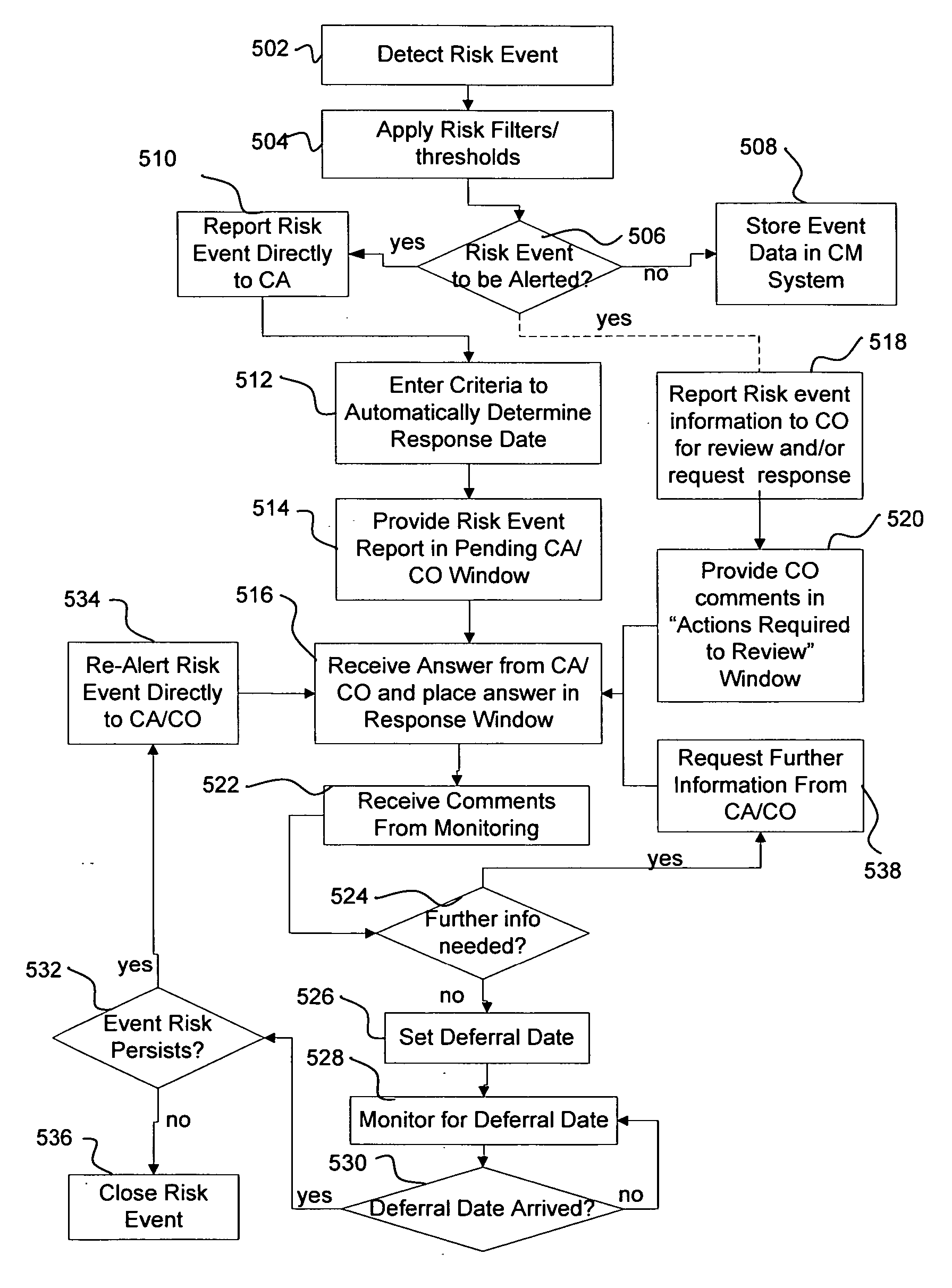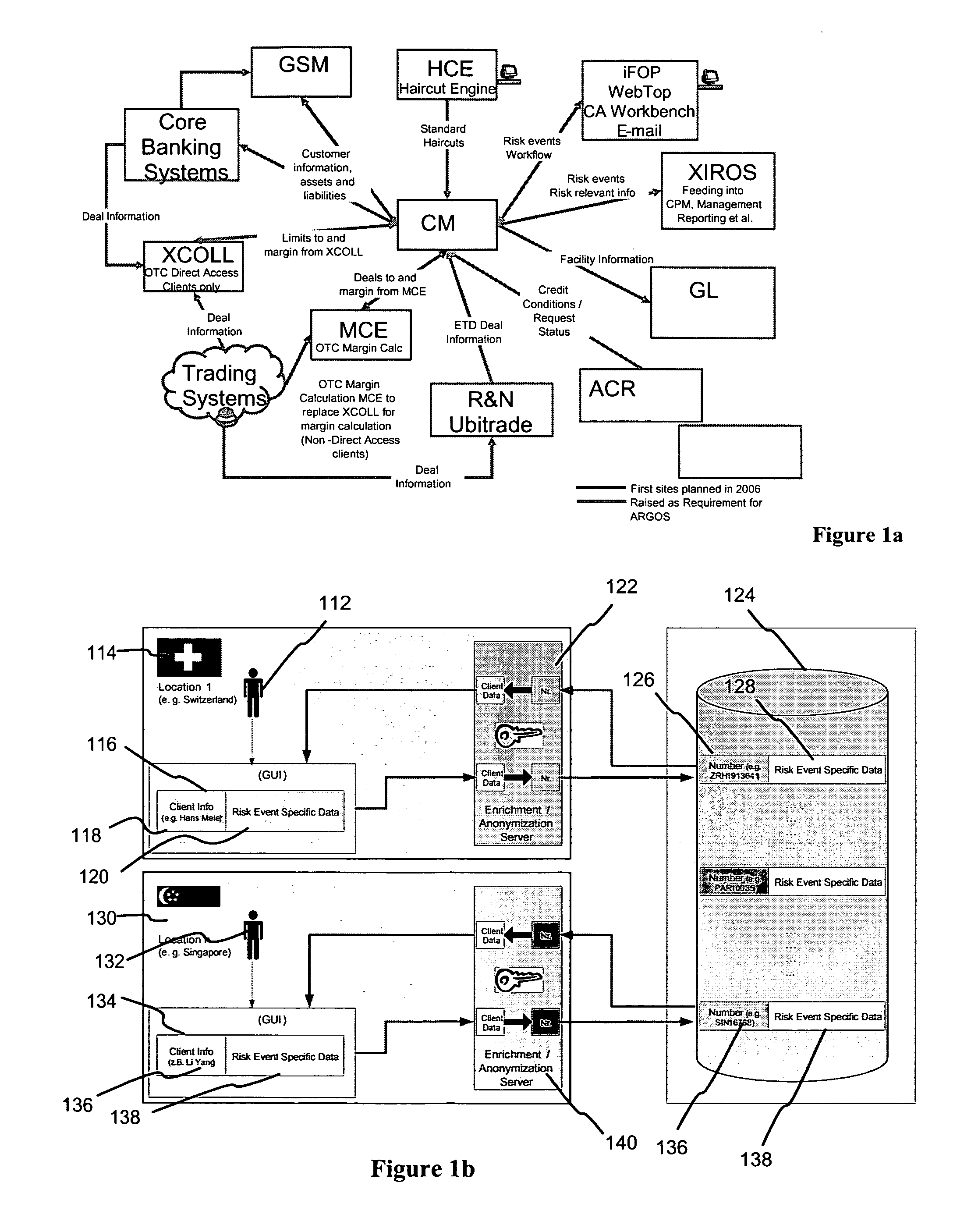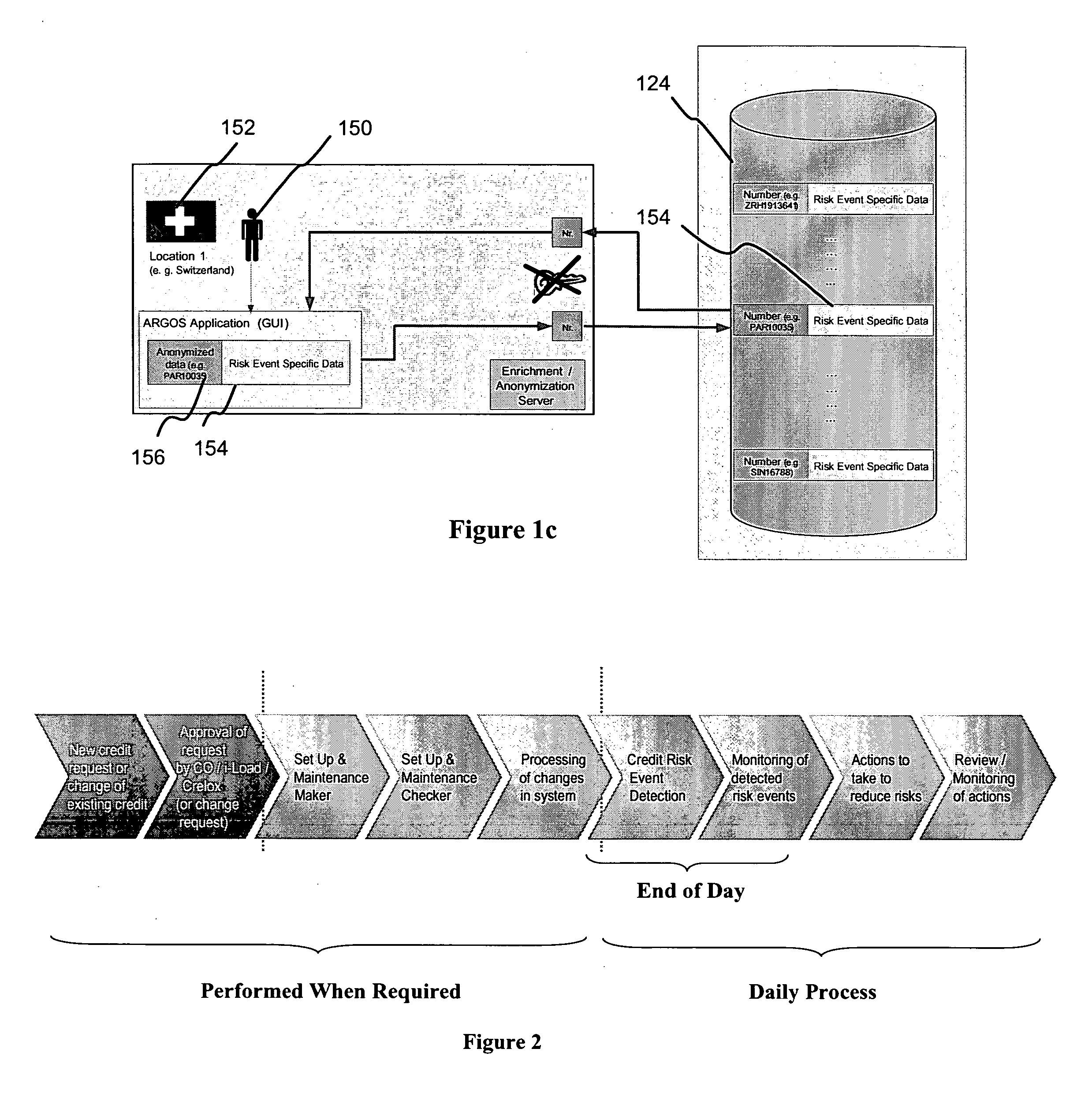System and method for credit risk detection and monitoring
a credit risk and monitoring system technology, applied in the field of tools for managing credit, can solve problems such as delay in system upgrade deployment, and achieve the effect of improving identification
- Summary
- Abstract
- Description
- Claims
- Application Information
AI Technical Summary
Benefits of technology
Problems solved by technology
Method used
Image
Examples
Embodiment Construction
[0029]FIG. 1a is a schematic diagram that illustrates exemplary features involved in a credit risk monitoring tool arranged in accordance with one embodiment of the present invention. In accordance with different embodiments of the present invention, the credit monitoring tool CM can be linked to some or all of the entities depicted in FIG. 1a.
[0030] Credit monitor system CM (also referred to as a credit monitoring system) can perform such functions as collecting daily data (e.g., assets, liabilities, derivative margins, market value, haircut (required percentage deducted from the prevailing collateral market value), and lending value) from interfacing systems, such as a database with a globally valid data model (GSM); local banking systems used for maintenance of client data (Core Banking); over the counter derivative risk margin calculator for clients having direct trading access (XCOLL), over the counter derivative risk margin calculator (MCE), lending value maintenance system u...
PUM
 Login to View More
Login to View More Abstract
Description
Claims
Application Information
 Login to View More
Login to View More - R&D
- Intellectual Property
- Life Sciences
- Materials
- Tech Scout
- Unparalleled Data Quality
- Higher Quality Content
- 60% Fewer Hallucinations
Browse by: Latest US Patents, China's latest patents, Technical Efficacy Thesaurus, Application Domain, Technology Topic, Popular Technical Reports.
© 2025 PatSnap. All rights reserved.Legal|Privacy policy|Modern Slavery Act Transparency Statement|Sitemap|About US| Contact US: help@patsnap.com



